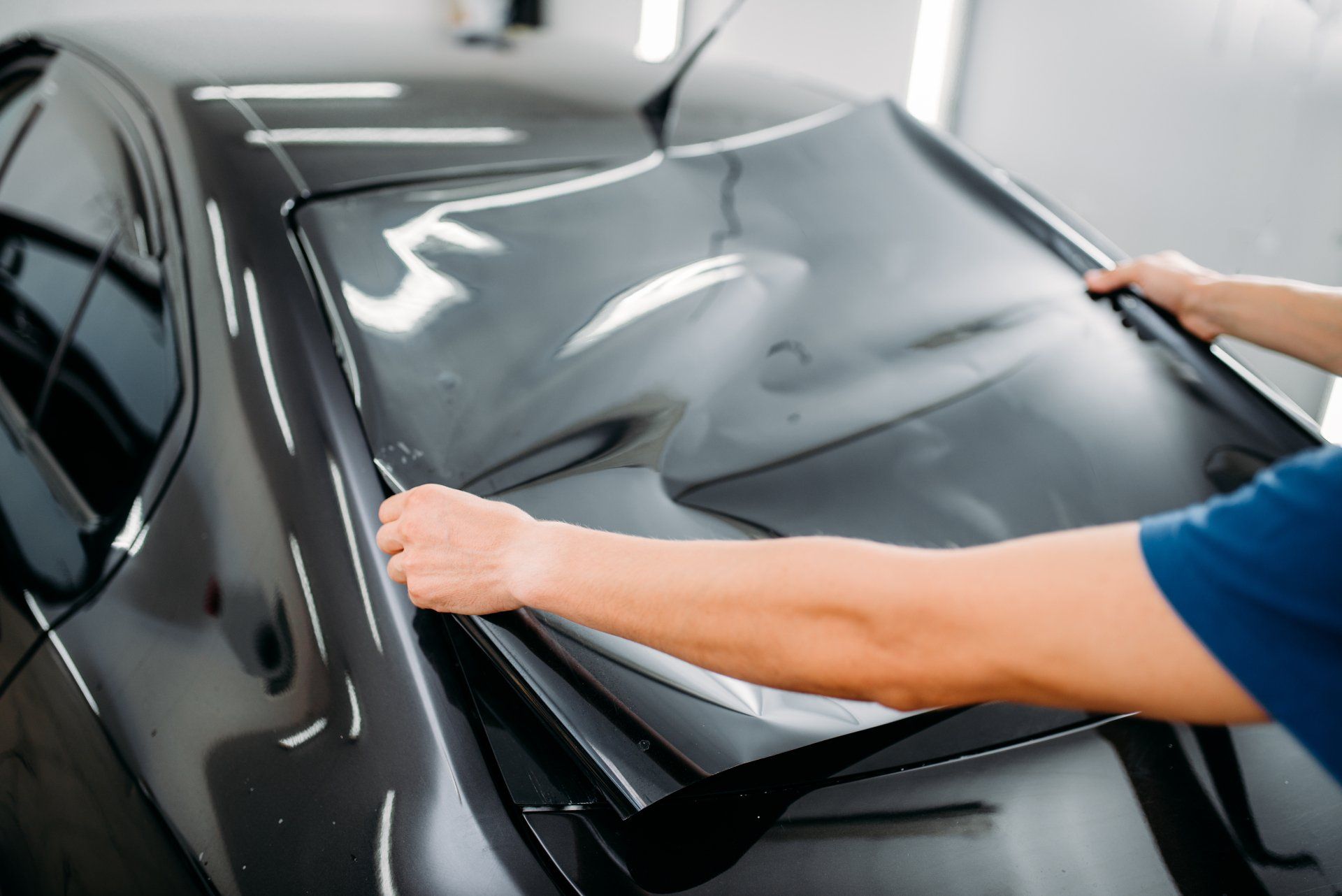The Refine of Specialist Window Tinting Explained
From selecting the right film type to the precise prep work of home windows, each step plays an essential duty in accomplishing a remarkable application. Adhering to these first preparations, the careful cutting and application of the film demand accuracy to stay clear of imperfections.
Selecting the Right Window Movie
The preliminary consideration is the type of movie, which can range from colored, metalized, to ceramic movies (window tinting). Dyed movies largely offer privacy and visual improvement, while metalized films mirror warmth and UV rays, improving power effectiveness.
Following, consider the movie's Visible Light Transmission (VLT) percent, which determines just how much light goes into the area. A lower VLT supplies better personal privacy and heat rejection but might minimize all-natural light dramatically. Furthermore, the film's solar heat gain coefficient (SHGC) is vital; a lower SHGC shows better thermal efficiency, aiding to preserve indoor comfort.

Preparing the Windows
Once the suitable home window film has actually been selected, the following action is extensively preparing the windows for installment. This prep work is important for achieving optimum attachment and making certain a perfect appearance post-installation.
The initial task includes cleansing the windows carefully (window tinting). A high-grade glass cleaner is necessary, ideally one that is ammonia-free to prevent damaging any kind of home window seals or tint materials. Using a lint-free fabric or paper towels, professionals need to remove any type of dust, dirt, or grease, paying unique focus to the sides and edges where debris usually gathers

Reducing the Film
An exact method to reducing the movie is vital for making sure a perfect fit on the prepared home windows. This step needs both skill and focus to information, as inaccuracies can bring about undesirable spaces or overlaps that compromise the aesthetic and functional top qualities of the color.
Before reducing, the expert need to measure the home window dimensions properly, making up any kind of one-of-a-kind shapes or shapes. It is a good idea to use high-grade window movie, as this product often tends to be a lot more forgiving during the cutting procedure. The movie is usually laid level on a tidy, smooth surface area, and a sharp utility knife is employed to make sure tidy sides.
To accomplish ideal outcomes, many specialists make use of templates created from previous installments or use software application to make exact patterns. A typical technique involves adding an additional margin to the design template, enabling for adjustments during the application phase.
Furthermore, cutting the film in a regulated setting reduces the risk of pollutants influencing the sticky side. By sticking to these careful practices, window tinting professionals can ensure that the film not only fits perfectly but also does successfully over time, boosting both look and functionality.
Using the Color
After carefully cutting the movie to the proper dimensions, the following step involves applying the tint to the window surface area. This process begins with making certain that the window is tidy and without any type of dirt, debris, or deposits that could affect bond. A specialized cleaning option is frequently made use of, adhered to by comprehensive drying out with a lint-free towel.
As soon as the surface is prepared, the installer will very carefully position the color film versus the glass. It is crucial to straighten the movie accurately to stay clear of misplacement, as any type of errors can lead to an unprofessional appearance. To facilitate this, the installer might make use of see a light haze of application remedy on the adhesive side of the film, permitting slight repositioning if required.
Making use of a squeegee, the installer will certainly then start to press the film onto the glass, working from the center in an outward direction to visite site remove air bubbles and make certain a company bond. This method is vital, as it ensures a smooth and remarkable finish. Throughout the application, interest to information is vital to stop creases or flaws, making sure that the tint not only boosts aesthetic appeals however additionally gives the desired functionality.
Final Inspection and Care
The final evaluation is an essential action in the window tinting process, making sure that the installation meets both visual and useful requirements. During this stage, specialists diligently check out the installed color for any flaws, such as bubbles, folds, or imbalances. A thorough assessment also consists of checking the adherence of the film to the glass, along with its harmony and general look.
After the evaluation, appropriate care and maintenance guidelines are provided to the customer. It is necessary to notify them concerning the advised timeline for cleaning up the colored windows, normally advising a delay of a minimum of 30 days after installment to allow the sticky to treat totally. Customers ought to be educated on appropriate cleaning items and methods, highlighting the evasion of ammonia-based cleansers that can harm the tint.
In addition, professionals should encourage clients on see page the value of regular maintenance to extend the life of the tint. This includes regular look for signs of wear or damages and responding without delay to any type of concerns. By guaranteeing a detailed last examination and providing clear care standards, window tinting specialists boost customer fulfillment and the long life of their work.
Final Thought
The specialist window tinting procedure incorporates several important steps that guarantee top quality outcomes. Picking the appropriate film kind, preparing the windows diligently, accurately reducing the film, and using it with precision are essential for achieving a flawless coating. A comprehensive final assessment guarantees that all criteria are satisfied, while correct post-installation care is crucial for maintaining the tint's longevity and efficiency. Following these treatments inevitably boosts both the aesthetic allure and functionality of the colored home windows.